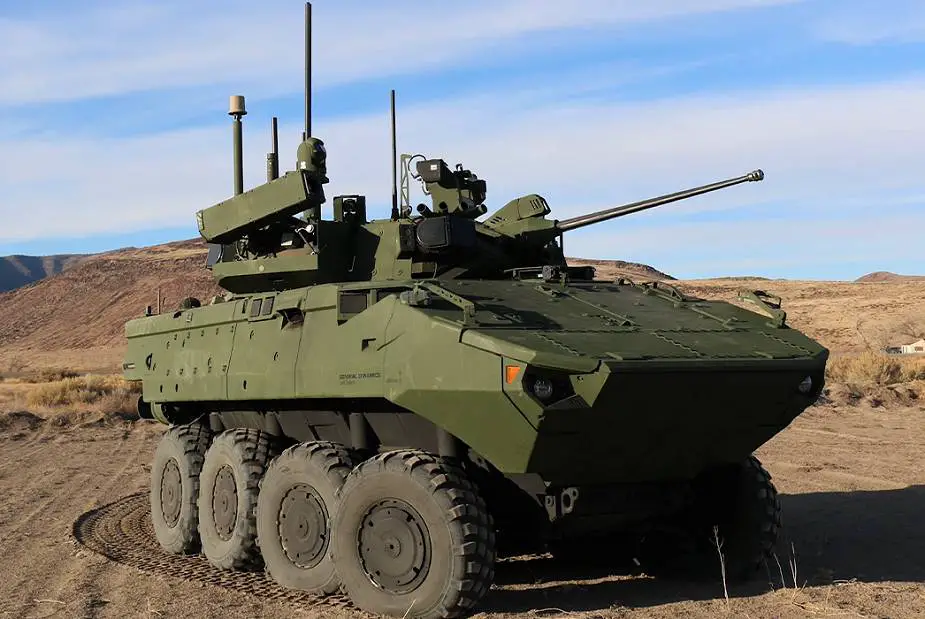In a recent tweet, General Dynamics Land Systems (GDLS) announced the introduction of its new Advanced Reconnaissance Vehicle (ARV), specifically designed and developed for the U.S. Marine Corps (USMC).
Follow Army Recognition on Google News at this link

The ARV program aims to replace the Light Armored Vehicle (LAV) with a new armored vehicle family. (Picture source GDLS)
The ARV, according to GDLS, will serve as the most comprehensive platform available presently, integrating an assortment of networked sensors and communications equipment within a cutting-edge electronic architecture. This design will enable the ARV to gather, process, and share data across Marine forces.
The design of the vehicle responds to the emphasis that the USMC has placed on transportability, fuel efficiency, and mobility. GDLS has made significant investments to meet these requirements, while maintaining the core capabilities of the Command, Control, Communications, Computers/Unmanned Aircraft Systems (C4/UAS) program.
The ARV program aims to replace the Light Armored Vehicle (LAV) with a new armored vehicle family. The ARV was originally intended to serve as the primary combat system in Light Armored Reconnaissance (LAR) Battalions, with functions including mounted and dismounted reconnaissance, surveillance, and security operations.
Various ARV variants are expected, with the first being the C4/UAS version. On July 16, 2021, the Marines selected Textron Systems and GDLS to build ARV prototypes. Prototype delivery was expected in early FY2023, with evaluation slated to finish by the third quarter of FY2023. Textron Systems delivered its ARV prototype, named the “Cottonmouth,” in December 2022, followed by General Dynamics a few weeks later, marking the onset of formal government evaluation.
In February 2023, the evaluation of three ARV prototypes, including one from BAE systems, started. The evaluation process is anticipated to conclude by the third quarter of FY2023, followed by a "multi-domain reconnaissance decision" at a future date yet to be specified.

















